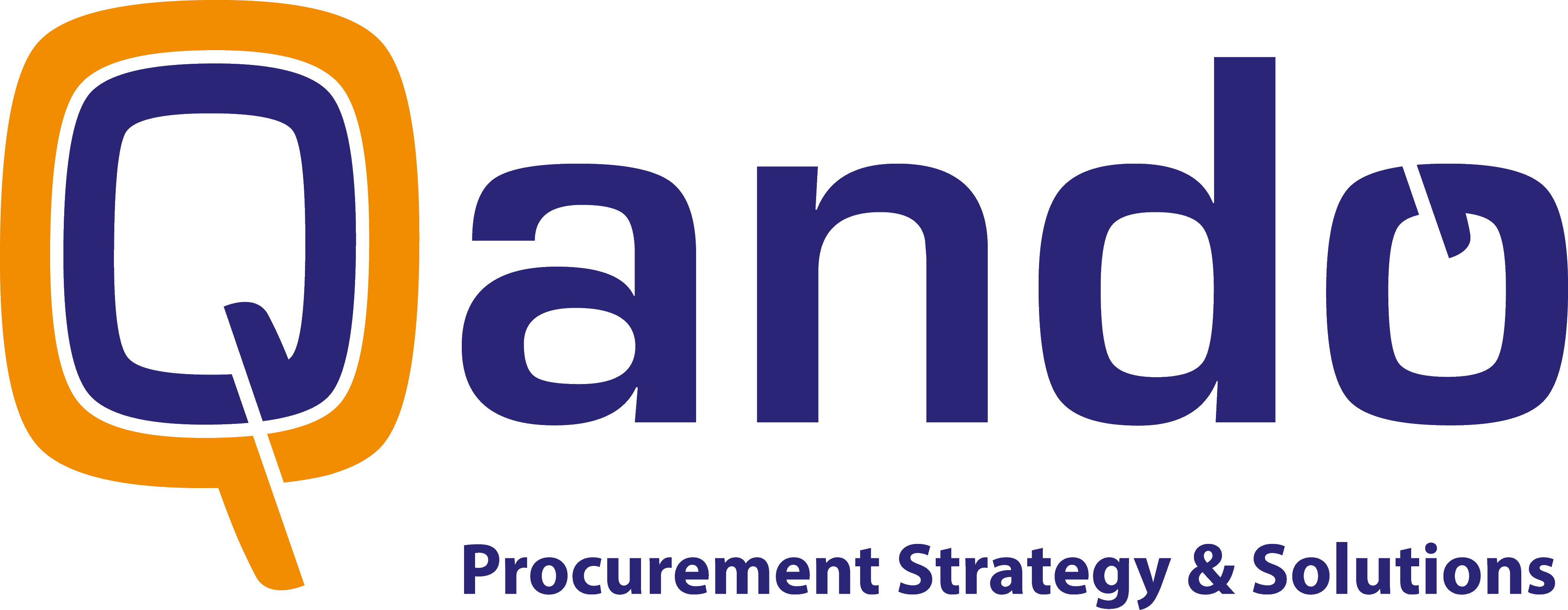New technologies like Artificial Intelligence and Blockchain are expected to have a major impact on the procurement function in the near future. At the same time, we still have to deal with lingering problems in our purchasing department, such as a shortage of time and resources and the lack of standardisation in processes. What does this mean for the future of the procurement profession? What will the next 5 years look like?
This blog answers these questions and uses information from the Zycus Pulse of Procurement research 2018. More than 400 procurement professionals worldwide took part in this survey.
Technological developments
#1 Artificial Intelligence
Although this technology is not new - one can think of spend data classification - Artificial Intelligence will be used in the near future in more and more purchasing processes. Examples include support for sourcing events, help with contract negotiation, verifying transactions and processing invoices.
#2 Internet of Things
The concept of Internet of Things is familiair to most people: a world in which devices and machines independently collect and send data to their environment. Purchasing professionals see advantages for optimisation of inventory management, machine maintenance and risk management. It should be noted here that there may also be additional costs, for example for data and network security.
#3 Blockchain
Blockchain technology is expected to have an immense potential (see also our reader - in Dutch) and purchasing professionals see this technology as particularly influential. The technology is used, among other things, to automate invoicing and payments, counter fraud and accelerate distribution - creating new opportunities for global sourcing.
#4 Robotisation | Automation | 3D printing
These technologies are particularly present in factories but they have substantial effects on purchasing as well. Consider, for example, the choice between purchasing parts for a new product and storing them in the warehouse or purchasing the license to print the parts yourself/ on location at the distributor. The supplier cost structure will change and with that the negotiations that you conduct as a buyer with this supplier.
#5 Sustainable energy and advanced materials
Climate change certainly plays a role in procurement when looking at the stricter legislation, regulations and compliance requirements. It is groundbreaking for old assumptions about the energy industry, has a significant impact on the price, changes supply and demand, and influences the supplier cost structure.
The emergence of advanced materials - graphene, nanotechnology, OLEDs, etc. - are also seen as influential, especially for the procurement professionals working in the industry of developing new products and design processes.
Pain points
Although we look forward to these technological developments, we have to deal with a number of lingering pain points in daily practice. The top-3 in 2018 looks like this:
- Lack of time and resources
- Poor insight into supplier performance
- No standardisation of processes.
Striking is the poor insight into supplier performance, which in 2017 had a fourth place. This may be due to risks associated with a tighter supplier market and accelerated inflation.
Not visible in the top-3 but worth mentioning is the pain point of data spread over different, separate sources - moving from place 6 in 2017 to place 4 in 2018. New pain points mentioned by procurement professionals are the shortage of experienced people and talent (place 8) and political and economic uncertainty - resulting in risks for military or trade wars (place 12).
Priorities
Taking into account the emergence of new technologies and the existing pain points, more than half (53%) of purchasing professionals are working on switching from tactical to strategic purchasing. By strategic purchasing we mean activities such as understanding the market and proactively managing supplier risks, optimising the supply chain in order to outperform the competition, spotting new technology and working on advantageous applications.
In addition, purchasing professionals specifically state that they are working to get as many insights as possible from Big Data / analytics and that they are investing time in a better collaboration with suppliers.
Of course, cost savings also remain relevant, as do the implementation of improvements for more efficiency in processes. In addition, cooperation with stakeholders and improving supplier performance are seen as important goals for the next 5 years.
Relevant KPIs
Cost savings - on average, buyers achieve 12% of cost savings. However, the largest group of buyers (42%) indicate savings of between 5% and 10%.
Spend under Management (SUM) - on average, a purchasing team has 54% of the total spend under direct management. This average falls in the largest group of buyers (33%) who report an SUM between 40 and 60%.
Contract compliance - on average, purchasing professionals see a score of 55% for the fulfilment (utilisation) of agreements in contracts. Most buyers (27%) indicate that contract compliance is between 40 and 60%.
The use of procurement technology
Around 70% of all procurement teams worldwide use a form of purchasing technology to support their purchasing processes. A great deal of attention is given to the use of the right procurement technology; it becomes clear that an average of 44% is not satisfied with their current tooling and more than 21% of this group is looking for an upgrade. The different types and usage are described below.
Spend analysis - 71% of companies use a form of spend analysis, often developed and grown within the company. The value lies primarily in identifying and prioritising opportunities for cost savings and strategically dealing with suppliers for cost efficiency.
Contract management - 70% of companies use software for contract management. It enables a purchasing department to store and monitor contracts - and all related documents - in a central location. The cooperation with the legal department in the same software is also seen as valuable. Furthermore, it offers advantages for analysis and reporting, monitoring contract compliance and reducing turnaround times.
eSourcing - 55% of companies have tooling for sourcing. Using the software, multiple stakeholders can easily collaborate in writing and analysing RfXs and transparency is created throughout the process of enrolling, analysing and awarding a tender.
Procure-to-pay - 65% of companies use software for the procure-to-pay process, which are predominantly built on an ERP-system. Procure-to-pay software contributes to visibility and transparency for all transactions and offers great benefits for both the user (shopping like you do on Amazon.com) and the suppliers with many self-service possibilities.
Project management - 58% use a tool for project management within the field of procurement. This tool is often self-developed and enables purchasing professionals to manage goals for cost savings, ensures that the correct steps in strategic sourcing processes are followed and identifies bottlenecks.
Request management - 62% of the companies have a system to manage all incoming - one time/ ad hoc - purchase requests. This enables them to control requests that otherwise do not fit into purchasing processes and provide a better service (= higher satisfaction) towards internal stakeholders. It is possible to track all details - including volumes and types - and to use the resources of a purchasing department in a clever way.
Savings tracking - 65% makes use of a system for tracking savings, the vast majority uses homegrown software for this. It enables them to map the expected, current and realised savings and to apply different classifications for this (negotiation, market development, etc.). It is also often possible to use a workflow to approve savings projects and performances achieved.
Supplier management - 61% indicates that they have tooling for supplier management, surprisingly often developed by themselves. A well-functioning system has clean, up-to-date information about supplier capacities, certificates, the degree to which they comply with specific legislation and regulations, and so on. It also enables procurement professionals to identify risks on time, to work better together and to identify well-performing suppliers for long-term cooperation.
Supplier network - 55% uses a supplier network. This is a platform on which suppliers can register, submit their product and service offerings and then have the opportunity to register for sourcing events at a large number of companies worldwide. Once chosen as a new supplier, a fast supplier onboarding is possible because companies can automatically pull in all relevant information. Therefore, companies are able to quickly find new suppliers, also for one-off or unique requests.
Adoption of procurement technology
Successful use of procurement technology requires high adoption by users. On average, procurement professionals use 53% of the available purchasing technology in their organisation. To increase this percentage, the following advice is absolutely relevant:
- Ensure that problems in the purchasing process are solved before procurement technology is implemented to automate the process in question.
- Identify potential power users (frequent users, early adopters) and appoint these persons as mentors for other users.
- Make training sessions and sessions for sharing success an integral part of team collaboration and organisation culture.
Future - the next 5 years
The upcoming technologies - such as Artificial Intelligence and Blockchain - are going to have a huge impact in the field of purchasing. In addition, the far-reaching automation of purchasing processes make purchasing professionals increasingly aware that their role is changing and is opening new doors to refine their own role by developing new skills and abilities. A good example is getting a grip on the overwhelming possibilities of Big Data/ analytics.
Remarkably, there is still a substantial lack of technological integration between purchasing functions and other business functions. Also within the procurement function itself there is a shortage of links between the various purchasing systems that are intensively used every day. However, procurement professionals have a firm belief that this will change significantly in the next five years, with an increasing use of 24/7 cloud technology.
Download as pdf
This blog is a summary of the information from Zycus Pulse or Procurement 2018. We provide a direct download link to the corresponding two white papers below.





